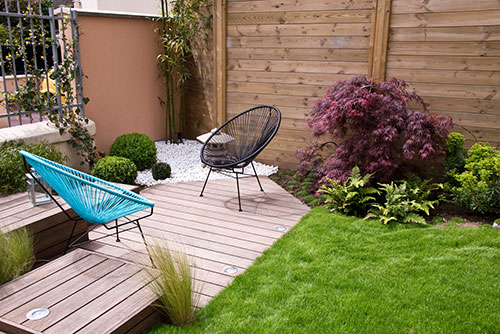Knowing how to landscape strategically is one very helpful way to keep your home cooler during the hot summer months. Maintaining a cooler home also helps reduce the wear and tear on your air conditioning unit, which has the added benefit of lowering utility costs.
If you’d like to revamp your home’s landscaping with increased shade in mind, here’s what you need to know.
Understand how the sun hits your home
To effectively landscape for shade, you first need to learn the size, shape, and location of the shadow that your home casts as the sun travels through the sky. Keep in mind that the shadow will change with the seasons, too.
Additionally, you should research the types of plants and landscape strategies that work best for the particular region you live in. For example, some homes in cooler regions may not have much to worry about when it comes to overheating, and climate is an extremely important consideration when choosing plants. It always pays to do your research before making big decisions!
Cool in the summer, warm in the winter
If you live in a climate with hot summers and chilly winters, plant deciduous trees. During the intense days of summer, the leaves will help block some of the sun’s rays. When the leaves fall during autumn, sunlight can reach the home.
Don’t just take our word for it, either. According to Energy.gov, this is the ideal planting strategy:
- Plant taller trees to the south of your home to maximize the amount of shade your roof receives during the summer.
- Trees with leaves that are lower to the ground should be planted to the west. As the sun slowly sets throughout the day, it hits your home at a lower angle by afternoon, which is why this strategy works. Shrubs are also a good choice.
Create shade with garden vines
A vertical vine garden is an excellent way to help cool a home, and it tends to show results much faster than planting young trees. Vines also have the added benefit of providing insulation from hot outdoor air, and there are tons of different types to choose from based on your preferences and needs.
According to MiracleGro, it’s best to plant a perennial vine such as native Jessamine, which can supposedly reduce surface temperature fluctuations by 50%. Virginia creeper is another good option, and because it’s a deciduous plant, the leaves come alive with bright colors during autumn.
Indoor plants that cool down a house
The foliage inside a home also plays a role in regulating air temperature, so if you’re looking for an extra cooling boost, try some of these plants that will keep your home naturally cool. Many of these indoor plants also help purify the air, which is doubly helpful if you close your windows often during the summer.
2-10 HBW offers the most comprehensive Home Warranty coverage for homeowners. Let us help you protect your home.








